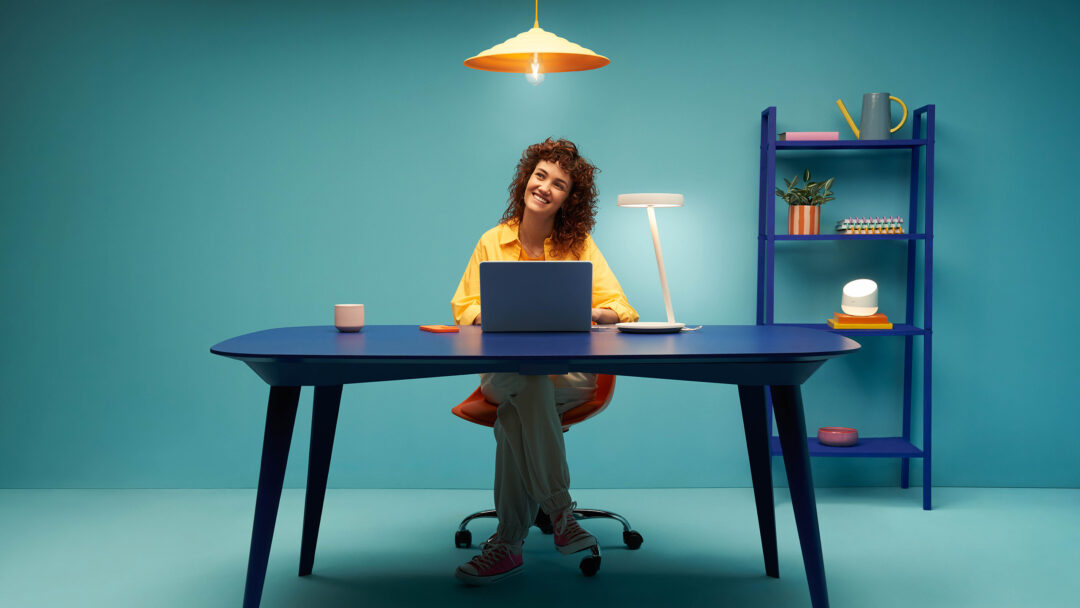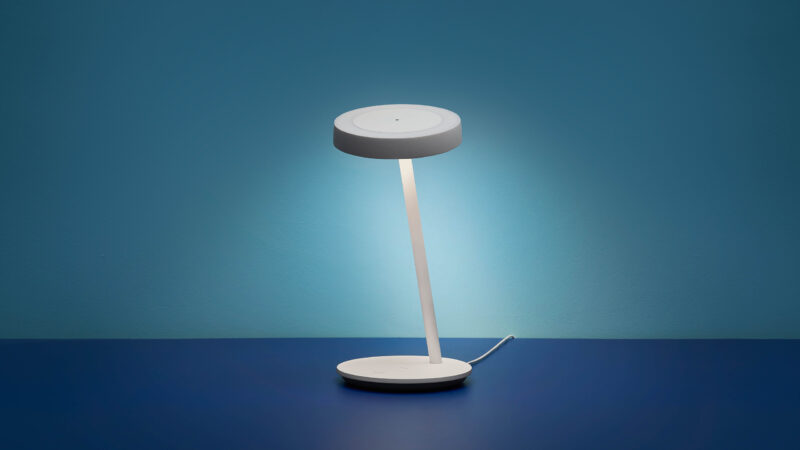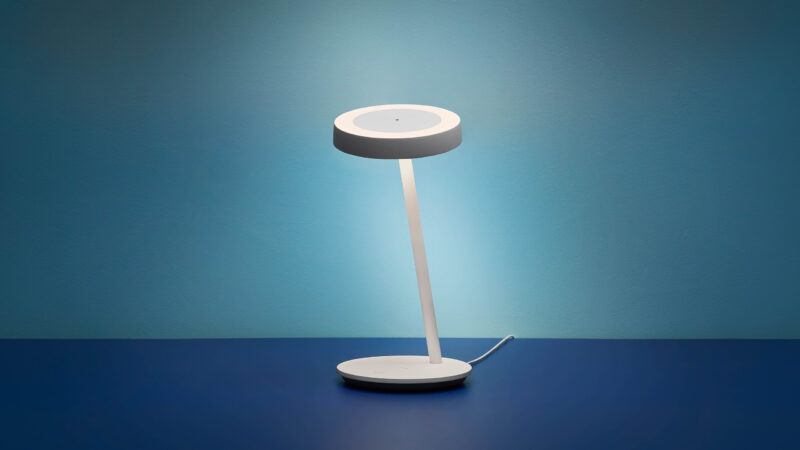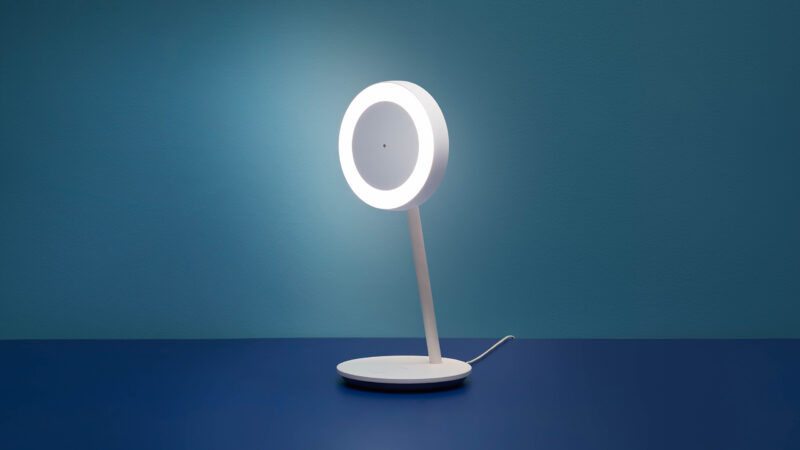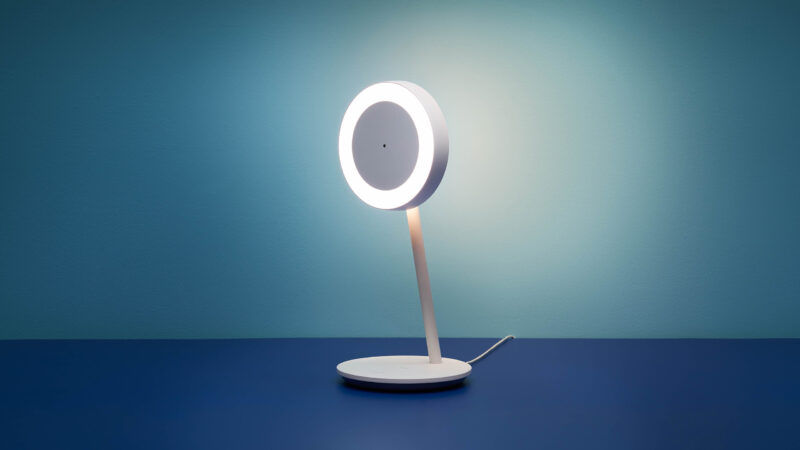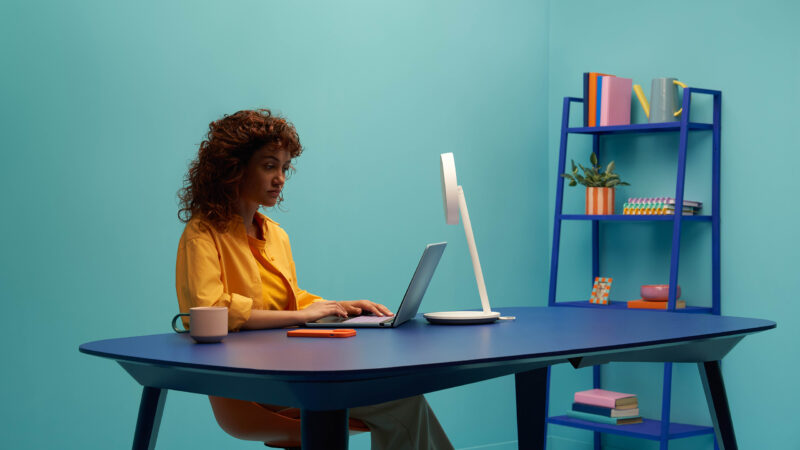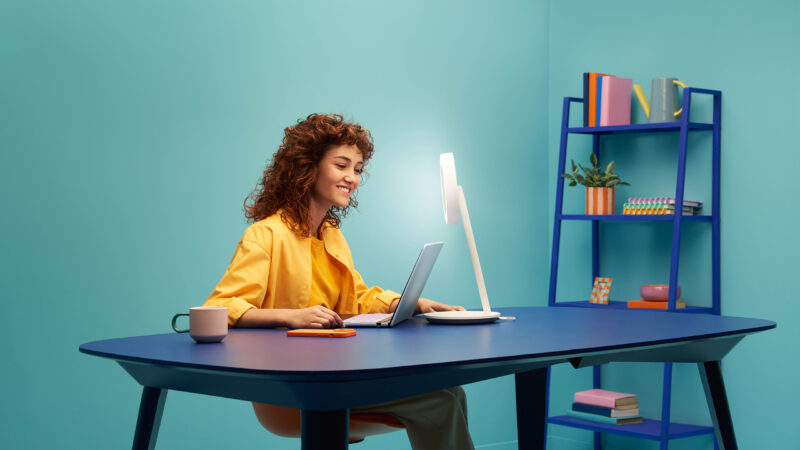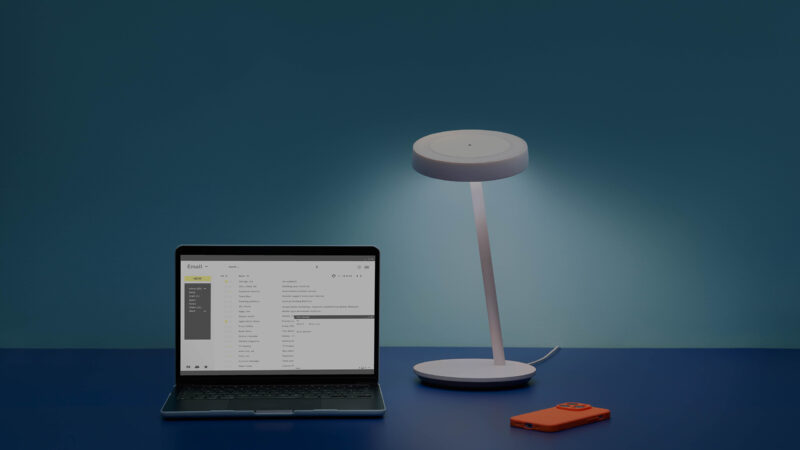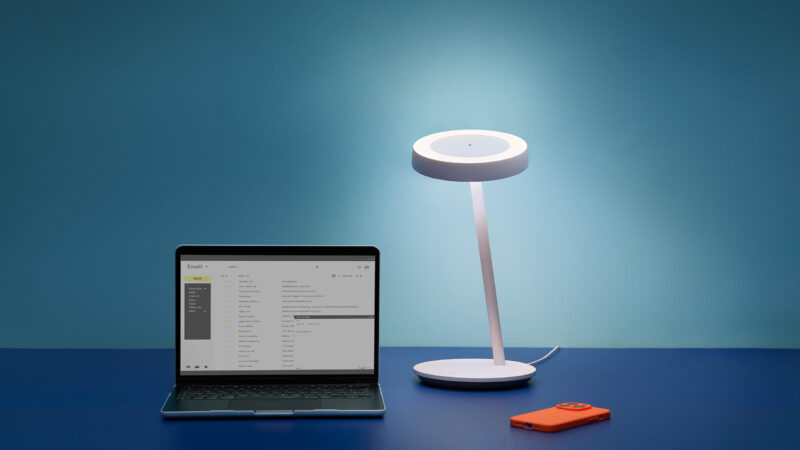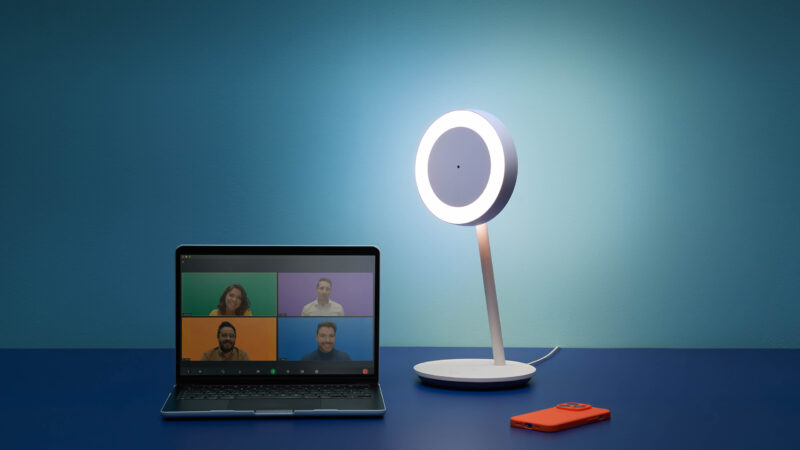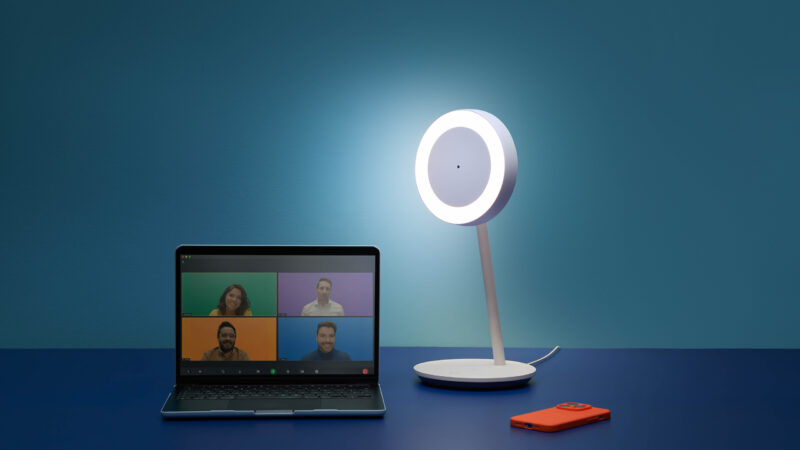WiZ Portrait is a relatively neat and simple table lamp with a round base and a flat round disc as the ‘head’. A powerful light source shines downwards towards the table and a ring-shaped light source with lower brightness on top illuminates the room.
Until you tilt the lamp head to vertical. Then the WiZ Portrait turns into a so-called ring light. A ring light is used for video and portrait photography where an even, soft light without shadows is needed, as the subject is illuminated evenly from all angles.
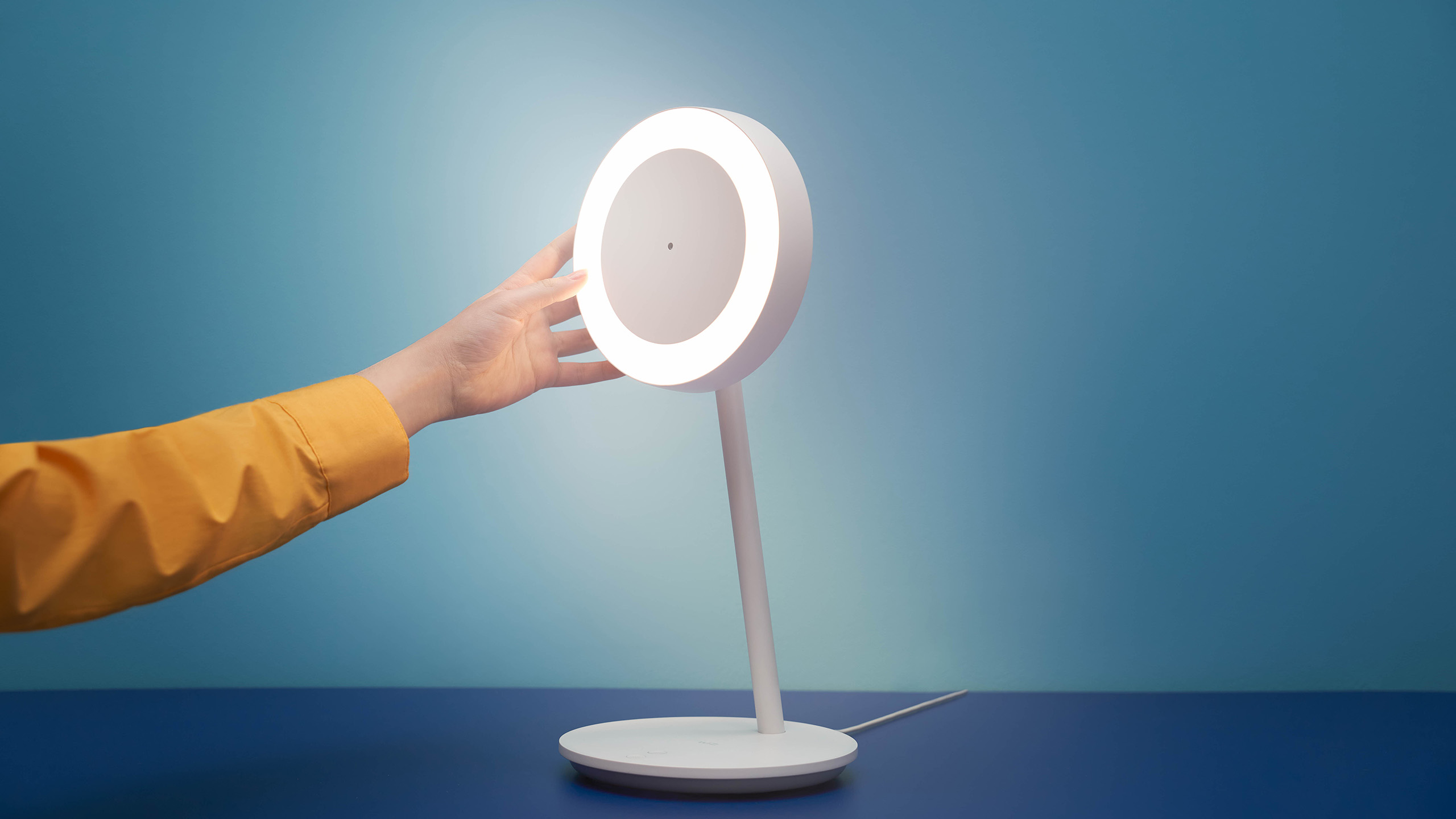
If you’re planning a career as a streamer, video blogger or influencer, a ring light is a must-have. Whether the WiZ Portrait is the answer to this need remains to be seen.
Smart light at half the price
WiZ is quite literally the poor man’s Philips Hue. The two come from the same smart light manufacturer, Signify, which until 2018 was called Philips Lighting.
The Philips Hue Signe Gradient floor lamp is the funniest and most versatile Hue product we have tested so far.
Although the two brands are closely related, their smart lights have different systems. So you can’t control your WiZ bulbs from the Philips Hue app or vice versa.
Hopefully, these inconveniences will be a thing of the past once the Matter standard becomes widespread, allowing us to communicate with all our smart devices via the same platform (Google Home, Alexa, Siri Shortcuts or Apple Homekit), regardless of what lies beneath the technical surface.
Matter makes it simple – if you have the code
We’re close to getting there, but we’re still at a crossroads. When I set up WiZ Portrait, I didn’t need to open the WiZ app. Instead, the Matter logo appeared on the mobile screen and I was prompted to scan the lamp’s unique QR code.
Which I did – simple and quick. That is, after looking in vain on the packaging and under the lamp base. But I eventually found the QR code in the tiny paper manual that was also in the box. Here I also found the equally unique numeric code, which is the only other way to incorporate the light into the app. It would be much safer to put both codes on the underside of the lamp itself! Paper and packaging are easily lost – but the lamp base is a permanently attached part that is guaranteed not to disappear before the lamp itself ends up as electronic scrap.
Philips Hue Go is a table lamp that can be used even when you're away from the power socket. And it can also withstand a light rain shower.
USB charger must be purchased separately (and you need it)
Before you get that far, the light needs power. A USB-A to USB-C cable is included with WiZ Portrait. But no USB charger. Products with a USB power supply without an included charger are not uncommon these days. Even very expensive mobile phones often come without a charger. This saves on natural resources, of course, but the lamp still needs power – quite a lot of power, in fact. And very few chargers lying around in the drawer are capable of delivering the 5V/2A that the WiZ Portrait requires. That’s also more than most USB ports or USB hubs can deliver. A USB charger of this strength costs around 20 euros in online shops. That’s an additional cost of almost a quarter of the lamp’s price. There is no built-in battery, so the charger needs to be plugged in all the time.
With the power supply and setup sorted, the light can finally be put into use. And it’s pretty much as simple to use as it looks. The Matter setup automatically integrates the light into the household’s Google Home and adds it to a room in the home where it can be controlled with the Google Home app.
Two lights in one
WiZ Portrait covers the entire white colour spectrum (2,700K – 6,500K) and the brightness can be adjusted up to a maximum of 500 lumens on the downward light source and 100 lumens on the ring light. However, you cannot adjust the two light sources separately with Google Home.
However, you can in the WiZ app, where you can determine the brightness and colour temperature of the two sides of the lamp individually. You can even assign each side its own light animation. Great as a party trick – and lousy as a reading light. Fortunately, there are plenty of more useful settings available.
Sense of rhythm
In the app, you can also define schedules so that the light changes according to a time table. You can let the light follow a biological circadian rhythm with bright light to wake up in the morning and dim, yellowish light before bedtime. And you can even use your lights as motion sensors thanks to clever use of the Wi-Fi signal. But that’s only via the WiZ app – and only for lights of the same brand.
Lights, camera – action!
But the WiZ Portrait was created for bigger tasks than simply being a humble reading light. Perhaps TV fame is waiting for you when you tilt the lamp head and use it as a ring light?
Or maybe it doesn’t. The functionality is fine as such, and the lamp casts a soft, shadow-free light on your head (again, the brightness and colour temperature can be adjusted in the WiZ app). But it’s just not very practical if you need to use it with a computer monitor, which is pretty essential for video streaming.
Only for beginners
The WiZ Portrait is too short to be placed behind an external monitor. And when placed in front of the monitor, the lamp head obscures the image, while the rear-facing light blinds the webcam.
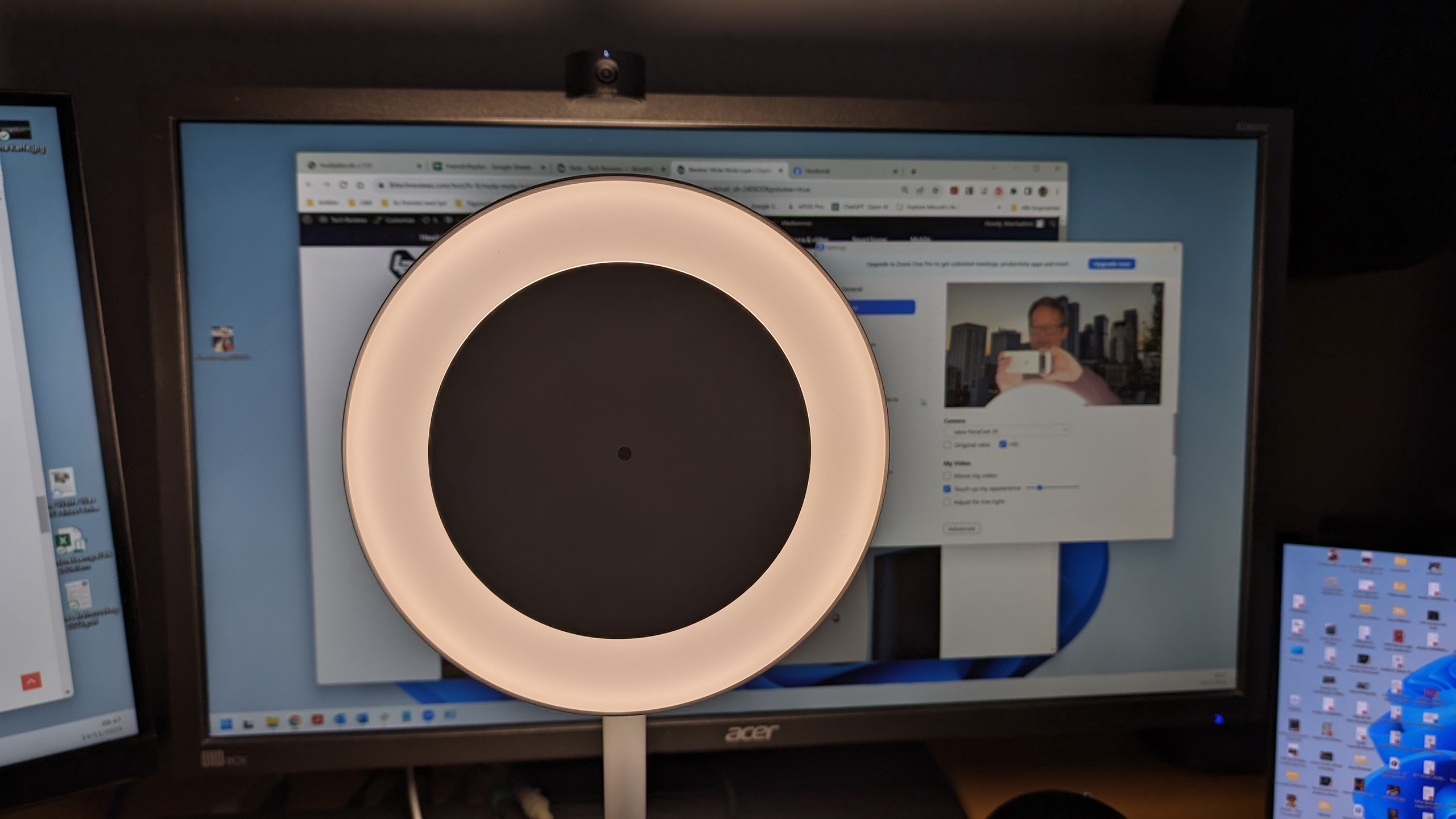
The lamp is therefore only suitable for the video beginner who is still making do with a small laptop and its built-in webcam. Here, the light can be placed behind the laptop and illuminate it. However, the screen must be no larger than 14″ if you don’t want it to block the light.
Finally, ask yourself the important question: “Do I wear glasses?” If you do, the luminous rings will be clearly reflected in your glasses. This is not WiZ Portrait’s fault, but ring lights are just not suitable for people who wear glasses.

Conclusion
The WiZ Portrait is a neat and fairly inexpensive lamp with two light sources and two uses in one unit. It’s not a design masterpiece, but it works well as a table lamp, where the ability to adjust the two light sources separately offers creative possibilities.
As a ring light for video, it’s just barely usable for the beginner, but it’s too small to be used for video production with even a minimal amount of ambition.
The price is low enough that it suffices as a good table lamp. But you should expect to add the cost of a USB-C charger on top of that.

100 €
Specifications
- Colours: White warm/cold (2,700K – 6,500K)
- Brightness: 500 lm (4,000K) (primary light source) / 100 lm (4,000K) (video light)
- Colour Rendering Index (CRI): 90
- Battery life: N/A
- Density: Not stated
- Wireless: Wi-Fi, Bluetooth (setup)
- App control: WiZ
- Works with: Matter, Apple HomeKit, Amazon Alexa, Google Assistant
- Remote control: WiZ (not included)
- Power supply: USB-C, 5V/2A. Adapter not included.
- Size and weight (WxHxD): 19.5 x 38.0 x 20.4 cm / 1.4 kg
- Web: wizconnected.com
